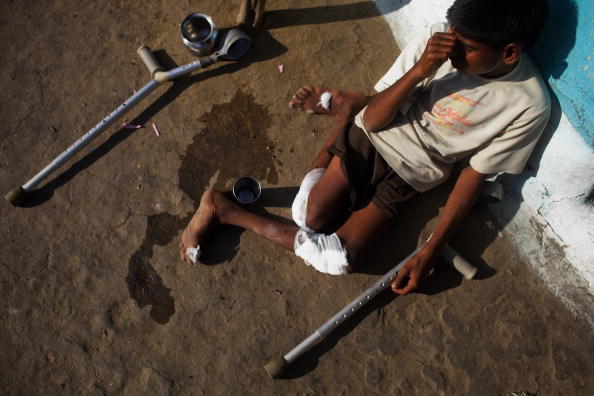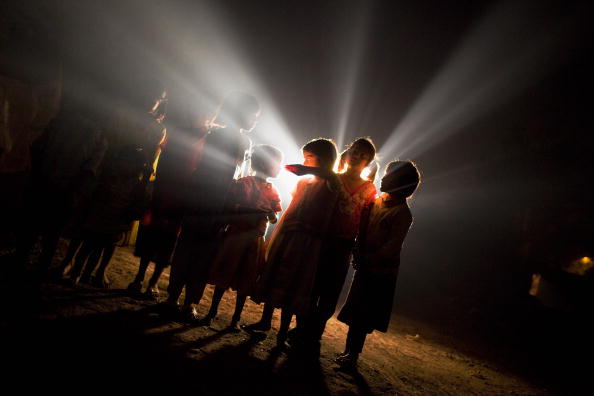
As a child, I was not able to play sports due to a congenital heart disease. It was way too much stress for me to take which eventually led to my exemption from sports through out my school years. As my friends played endlessly in the scorching heat, I would sit on the bench working on an assignment or scribbling away on my notebook. It was only natural for me to feel left out of all those enthusiastic chatters about upcoming tournaments, game tactics and the new sports being introduced as we moved to higher classes. Needless to say Thursday was the most favourite day for everyone else but me. With timethough I had finally become more creative with using the free time on my hand. It was then that I met Sonia, who became my best friend in primary school; she had hearing disabilities that also affected her speech greatly. Sonia’s problems struck a chord making me realize that my problem was only a petty one compared to other things people had to face. People who had disabilities worse than mine. I would not even call my illness a disability even though it pretty much felt that way. Not being able to participate in the routine stuff kids my age loved to do, seemed like a lot back then.
Nevertheless, it is true time teaches us a lot. I grew up learning how things could have been worse, finding out and learning about other people who suffered a lot more than me. I could talk, hear and see properly it did not matter to me if I could take part in sports or not anymore. I remember being deeply touched by the problems Sonia had to face; it slapped me in the face for being selfish. By that time, I had decided to do my little in helping her out in whatever way I could. I would spend my free time talking to her, helping her catch up with work and trying to help her figure out her niche. Something that she felt passionate about, a talent that would help her gain self-confidence. It was not long until we both realized she was an amazing artist, naturally talented. I would suggest her things she could sketch and then spend hours marvelling about her skills. Over the years, Sonia changed drastically. She evolved in to someone who was now more confident about her abilities; everything else seemed to take a backseat. She has now graduated from a renowned art school–following her passion and the inborn talent–not only that she is currently working as a teacher for primary school.
From being a girl who put up weak fights against the bullies Sonia has now become like any other independent working woman–only stronger. This experience has taught me a lot more than the essence of friendship and my ability to make the little difference. It taught me how self-confidence and fortitude could ward off perceptions. The unwanted sympathies that are hurled ones way much more out of pity than support. Sonia’s newfound confidence in her changed everyone’s perception. From the way they looked at her down to the way she was spoken to, she was the new girl in school all over again, the girl whose talent and confidence swayed everyone.

I was fortunate to have learnt from this experience at a rather young age. It changed the way I looked at things and made me realize that even a little could make the difference. There is always something to look at beyond the disabilities of a person. Things that we can appreciate and not glaze over. A simple practice of judging people and appreciating them for what they can do instead of what they cannot. But this should not stop us from being realistic. Motivation is important but so is practicality and putting things in action. It is often that we overlook a lot that goes around us. Ruins of living in a society where we lack a civil discussion even on the most serious issues.
Another friends experience made me rethink of how most of our issues never surface. Mansoor suffers from radial club hand, a congenital abnormal development of the forearm. Fortunately for him his arm retains its functionality, although not fully. The disease has never been a hurdle in his course of work. Despite that, he was flatly denied a driving licence even before a medical examination. Apparently, the officer was certain that Mansoor would not be able to drive with his disability, even though he had been for the past years. The attitude was devastating enough to turn anyone into opting for driving without a licence. After all, in the all-so-lawful society of ours no one had bothered him before for one. Our law-abiding traffic sergeants would not dare stop a flashy car or even if they did, nothing bothered them as long as some ‘chai-pani’ was in store. Mansoor is amongst the privileged ones, he was able to get his licence despite the ridiculous behaviour. However, the fact remains that not many would be influential enough to put up a fight. My plea is for those who are treated as an outcast for being ‘disabled’ without even being granted a decent chance at a medical check-up.
Sonia and Mansoor are amongst the more privileged ones their disease has not made the same impact it does to many others. The common sights of men with torn clothes and disabled limbs dragging themselves to nearby cars begging for alms are usually ignored. While we pace back and forth running errands not much time is spared to the iniquity around us. The absence of rights for the disabled has crippled them far worse than their illness ever did. The blind eye to their problems is what makes life worse than the disability itself. Its incidences such as that make me feel that it is really us who suffer from a far bigger disability than these people do. Our disablity to acknowledge the rights of these people, being deaf and blind to their pleas and most importantly the crippled justice of our society. Absence of laws that could aid individuals suffering from any form of handicap is the real issue. I hope we acknowledge that society’s myths and fears about disability and disease are as handicapping–or even worse– as are the physical limitations of the actual impairment. Only a permanent stance of vigilance against such attitude of social exclusion, discrimination and bullying can help make the difference.
Published in THE FRIDAY TIMES on 4/12/2009









